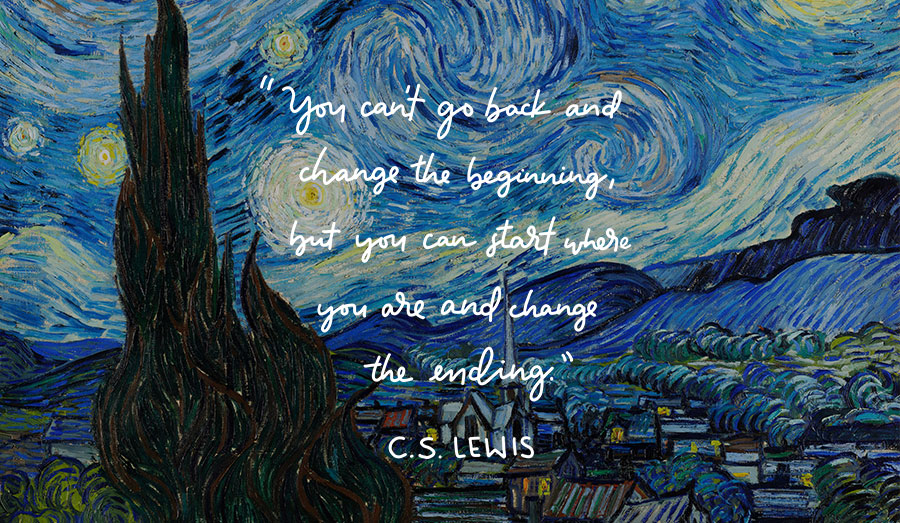A Christmas Reflection

NASA announced that for the first time in 800 years, the two largest presences in our solar system, mighty Jupiter and ringed Saturn will pass so close (.1 degree apart: the thickness of a dime held at arm’s length) creating an extraordinary radiance of light in our dark night skies. Astronomers have named it the Christmas Star of 2020. Best viewing is tonight, December 21st!
Over 2,000 years ago, another Christmas star lit up a Van Gogh night sky sending a cadre of wise men on a journey that would forever transform their lives. The story of the Magi, captured only in the Gospel of Matthew, is my very favorite of the Christmas vignettes. It is sparse in historical detail, leaving much to the Christian imagination. The Eastern Christian Church sets the number of Magi at twelve, whereas Western Christianity favors three, probably because of the trinity of gifts presented to the Christ child. We have taken many liberties over the centuries embellishing this inspiring narrative. As early as the 3rd century, Christians crowned them kings (“We Three Kings of Orient Are…”). In a chronicle entitled, The Latina Barbari, dating around the 8th century, the wise men were bestowed with names: Balthazar, Gaspar, and Melchior. We have the Renaissance Masters such as Fra Angelico, Botticelli, and Domenico Ghirlandaio to thank for bringing to life the Magi silhouette; richly adorning them in crimson, blue, and royal purple velvet robes, trimmed in gold and their arms-bearing exotic gifts of gold, frankincense, and myrrh.
We are told the Magi traveled far from the East. Some scholars estimate a 900-mile journey to reach tiny Bethlehem. Imagine setting out on a journey by foot or camel (which I am told by reliable sources is the most uncomfortable mode of travel) from Florida all the way up to the tip of New York. This was not a quick weekend galavant. The Magi journey was a commitment. Today, they are venerated as the patron saints of travelers. I believe the Wise Men’s journey is a perfect metaphor for our own physical and spiritual journeys here on earth.
For God, it is the journey—every mile, every breath, every relationship, every defeat and every joy that insures not only a fullness of life; but one that radiates depth and meaning. God created us to be these bold human avatars with the remarkable capacity to create beauty, to work the tireless muscles of courage and resilience when challenged, to practice forgiveness and crazy mercy—to master the art of love, given and received. We will indeed be humbled by the fragility of our mortal existence. What the story of the wise men offers to us is a roadmap to experiencing something more; something of the eternal here on earth. What transpired for those wise men —an intimate encounter with God— remains always possible for us too.
Each of us in secret wonders‚—hopes there is something more than what our eyes can see—a reality that would not turn to dust, a heavenly truth that would hold our soul center regardless of life’s circumstances, a love that would make the challenging journey of being human more than worth it. I believe the wise men found it!
The story of the Magi proves that if we continue to bravely put one foot in front of the other, a star will punch through our darkness and show us the way into the province of joy.
Recently, I have pondered why the Christmas magi are regarded as “wise men?” I have some thoughts. First, they intuited there was a fuller, more sacred reality available to them. And they dared to set out on a journey to find it. They did not allow the ups and downs of the journey, the disappointments and tragedies, the long bouts of darkness and too few revelations of light to turn them back or have them settle for a lesser reality. Secondly, we are told after having reached their destination—an encounter with God—they took another way home. I understand this to mean that anytime we experience something of the Divine whether found in the beauty of nature, a showing of mercy, or the profound experience of love—we have to let it change us from the inside out—our perspective, our life’s purpose, how we move, love and take our being in the world.
Oh to be wise!
There is a longing within each one of us (whether we listen to it or not) to draw near to God, to follow a star, to hear the angels sing, to peek behind the veil. Quiet and intentional we must become, careful not to let our feet get too mired in this temporal, too busy and often disheartening world, so that we miss the sacred that is available to us.
Always God pins a star in our dark night skies. We are never left alone. In our suffering, we have to believe that what is now, will not always be. We have to be open to what God is planning to do next redemptive in our lives and let this hope gird us to carry on.
The journey never happens in isolation. God gave us each other to make our way. Roy, my friend and colleague recently gifted me with a story that has completely transformed my spirit and life’s purpose. The protagonist is Robert Louis Stevenson, the beloved author of Treasure Island. He grew up in Edinburgh, Scotland at the turn of the 20th century when electricity was still a novelty. Streetlamps were illumined each night by lamplighters. One evening, Robert was watching the lamplighters at work up on their ladders. His mom asked, “Son, what are you looking at out there?” He replied, “I am watching the man punch holes in the darkness.”
C.S. Lewis said, “You can’t go back and change the beginning, but you can start where you are and change the ending.” We are to be lamplighters punching holes in the darkness for one another. I have a hunch this is how we will find our way to the stable!
Merry Christmas! I am signing off to spend time with my family. See you back here in 2021!


Sorry, the comment form is closed at this time.